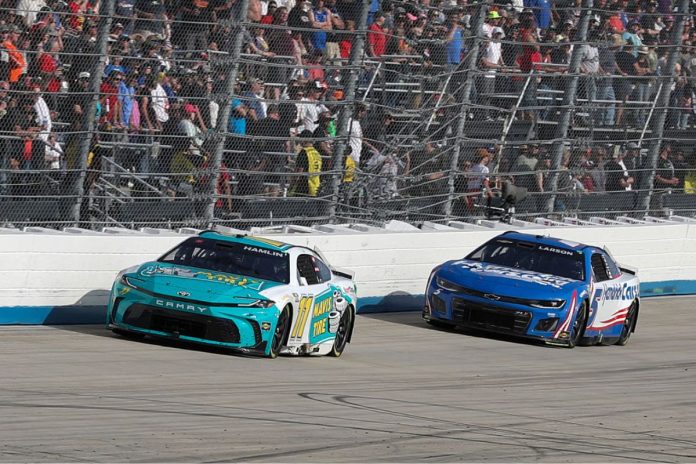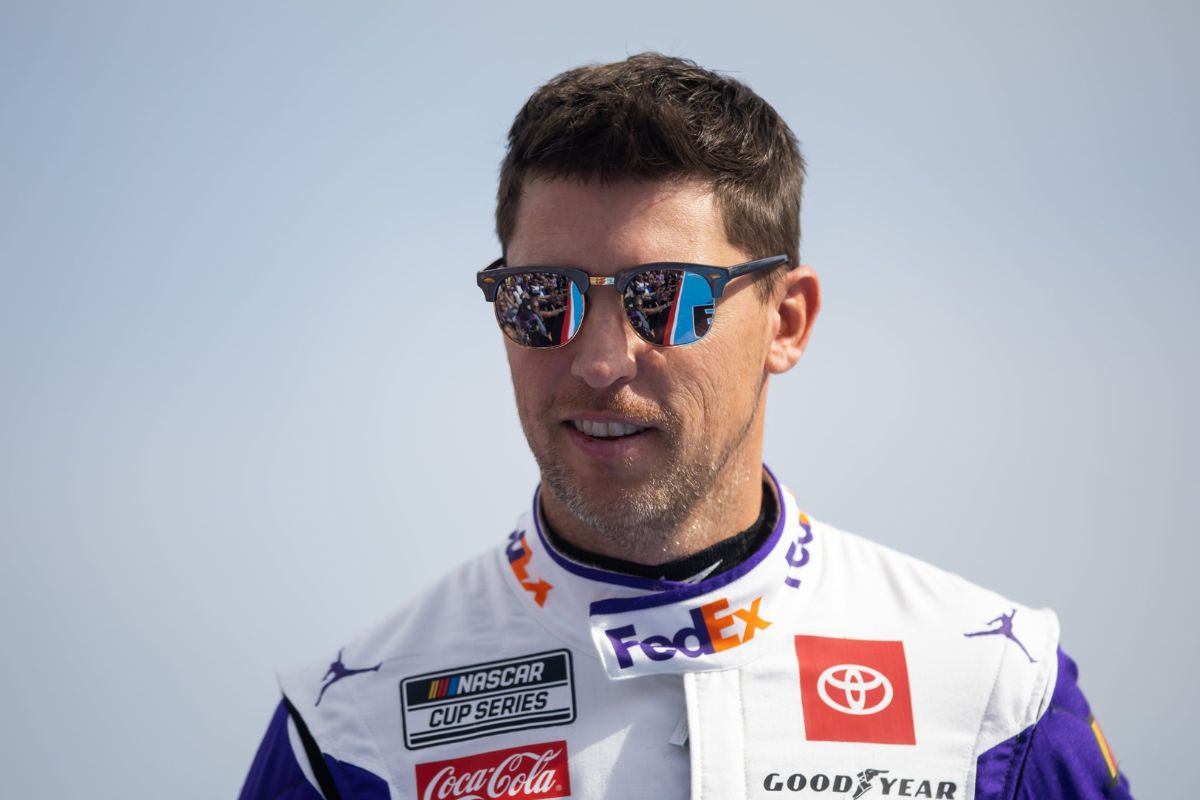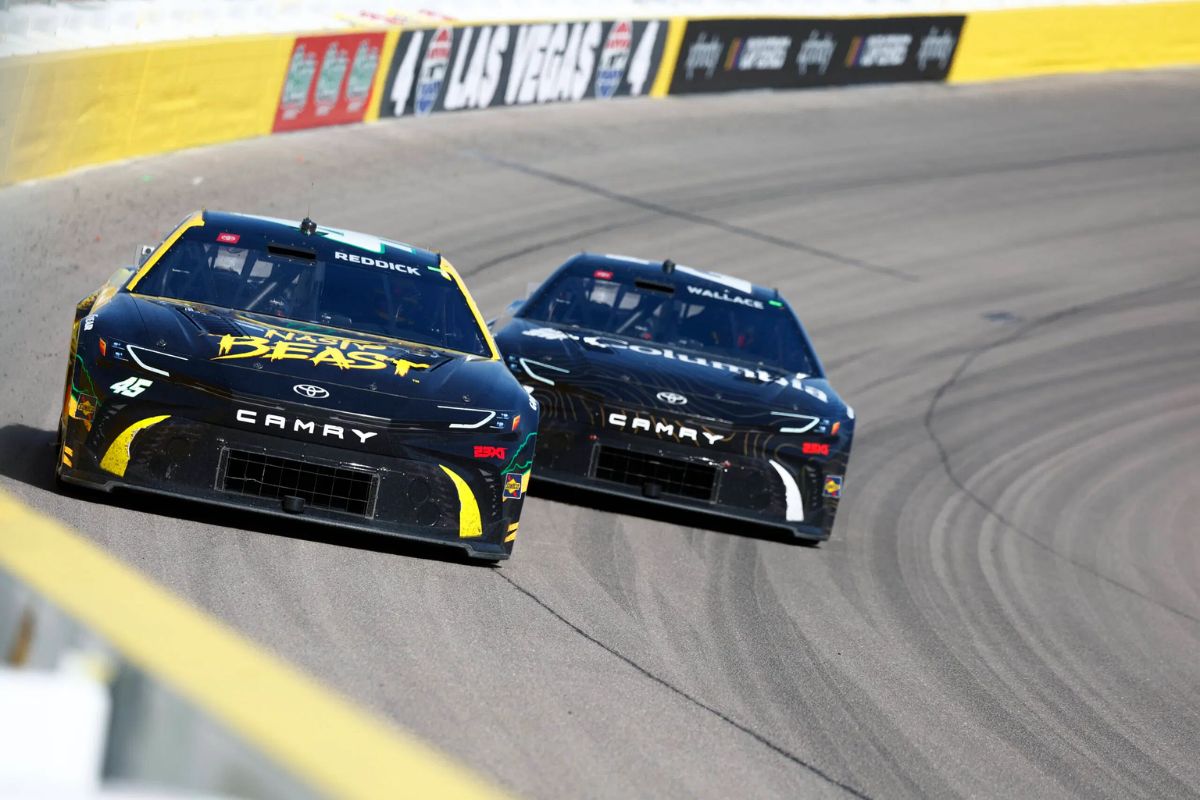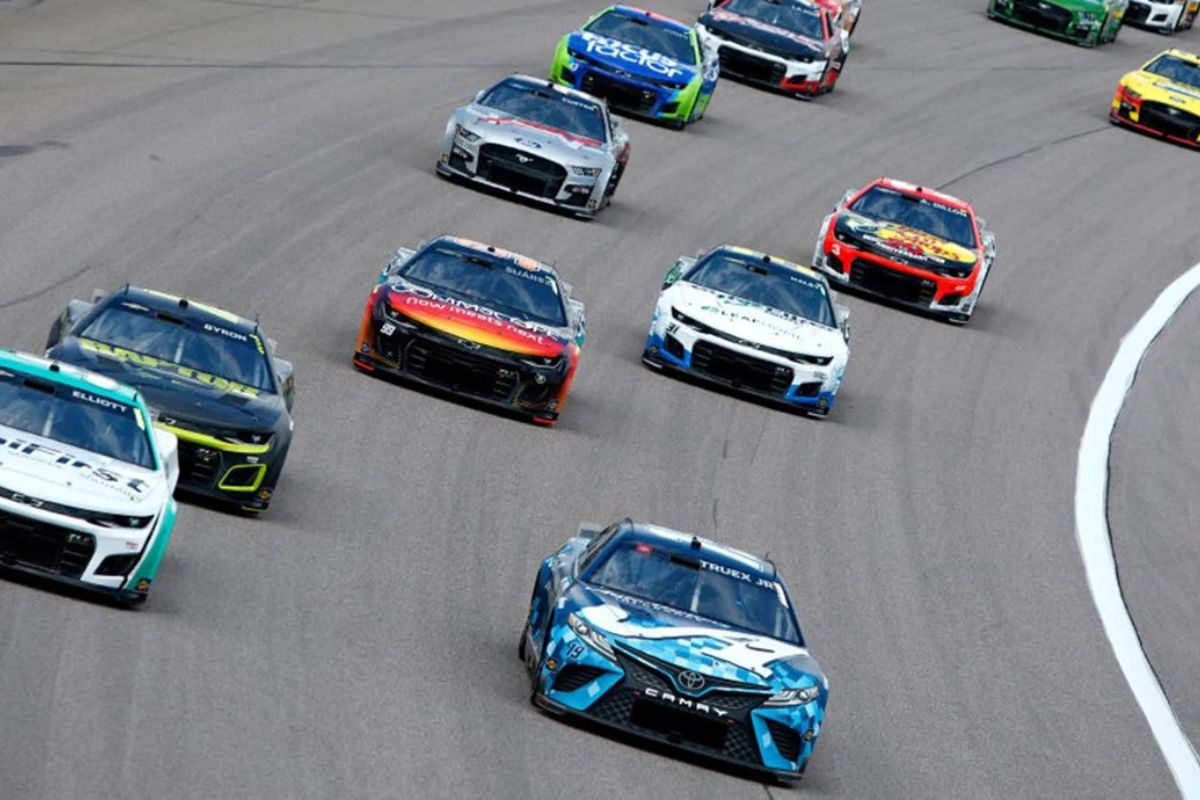NASCAR’s Aero Blocking: Since its emergence in the late 1990s, aero blocking has evolved from a novel racing tactic to a pivotal aspect of NASCAR, fundamentally altering the competitive landscape. This technique, which involves a leading car manipulating the airflow around it to hinder following competitors, not only emphasizes the importance of aerodynamic design but also poses significant challenges regarding race strategy and driver skill. As teams have perfected these airflow disruptions, the resulting impact on race outcomes has sparked debates among stakeholders about the balance between technological prowess and the traditional racing ethos.
Key Takeaways
- Aero blocking has been a strategic challenge in NASCAR since the late 1990s due to increased aerodynamic dependencies.
- Technological and regulatory changes have intensified the effectiveness of aero blocking over the years.
- The tactic disrupts trailing cars’ airflow, reducing their speed and overtaking ability, impacting race dynamics.
- Aero blocking has led to fewer overtaking opportunities, contributing to fan frustration with predictable, less engaging races.
- Critics argue for regulatory changes to reduce aero blocking’s impact and restore competitive balance and excitement in NASCAR races.
Denny Hamlin’s Controversial Victory
Denny Hamlin’s recent win at Dover Motor Speedway has reignited debates over the legitimacy of aerodynamic blocking techniques in NASCAR. This method, utilized adeptly by Hamlin during the critical stages of the race, involved strategic positioning and manipulation of his vehicle to disrupt the airflow to trailing competitors, notably Kyle Larson. Such tactics play a vital role in hindering the pursuing driver’s ability to maintain speed and maneuverability.
In motorsports where aerodynamics play a pivotal role, the ability to master the air flow around one’s vehicle can be as important as engine power or driving skill. Hamlin’s utilization of aerodynamic blocking at Dover showcased a profound understanding of these dynamics. By effectively altering the pressure zones around his car, he was able to create a turbulent wake that reduced Larson’s aerodynamic efficiency. This move, although legal, straddles a fine line between strategic brilliance and contested sportsmanship.
Critics argue that aerodynamic blocking undermines the competitive nature of racing by detracting from the skill-based aspects of the sport. They contend that victories should be determined more by mechanical performance and driver talent than by exploiting aerodynamic loopholes. Supporters, however, see it as a legitimate part of strategic racing, emphasizing that managing airflow is a skill that can be developed and mastered, much like any other aspect of racing.
Historical Context of Aero Blocking
Aero blocking, a controversial tactic in NASCAR, has its roots deeply embedded in the sport’s history, evolving greatly since its emergence in the late 1990s. Originally a byproduct of the aerodynamic dependencies that came with new car designs and regulations, aero blocking became a strategic maneuver used by drivers to capitalize on the air flow disruptions caused by their vehicles. This method affected the performance of trailing cars, complicating overtaking maneuvers and shaping race outcomes.
Over time, the evolution of this tactic mirrored the technological advancements in car design and regulatory adjustments. The introduction of higher downforce packages significantly boosted the effectiveness of aero blocking. These packages, favoring cars with greater aerodynamic grip, allowed leading drivers to manipulate air flow in a way that created turbulent conditions for their competitors, thereby securing positional advantages without physical confrontation.
Simultaneously, the shift towards engines with lower horsepower altered racing dynamics. This reduction meant that maintaining momentum and utilizing clean air became pivotal, further emphasizing the importance of aero blocking. The dependency on aerodynamic efficiency dictated strategic choices, influencing race tactics and driver behaviors extensively. Veteran drivers from NASCAR’s golden era, who experienced these changes firsthand, often voiced concerns regarding the increasing reliance on aero tactics, suggesting a shift away from skill-based racing.
90s NASCAR Examines Aero Blocking
In the late 1990s, NASCAR began to critically analyze aero blocking, focusing on how the manipulation of turbulent air by leading cars impacts the dynamics of racing. This strategic maneuver involves a leading car deliberately disturbing the airflow to create a turbulent, less aerodynamically favorable environment for the following car. This phenomenon, known as ‘dirty air,’ results in reduced downforce and grip for the trailing car, making it substantially more challenging to maintain speed and maneuverability, especially on high-speed tracks.
Aero blocking emerged as a sophisticated race tactic, rooted in the physics of aerodynamics. The leading driver, by adjusting their driving line and position relative to the trailing car, can effectively manage the airflow to disturb the aerodynamic efficiency of competitors. This strategy forces the trailing car into a position where it encounters increased air resistance and turbulence, which can lead to higher tire wear, reduced fuel efficiency, and ultimately, slower lap times.
Aero push, something that everyone complains about today but it was also a big complaint during NASCAR glory days to. In 2002 NBC showed a segment of drivers talking about how bad aero push had become and literally everything that was said in this video is what is said today pic.twitter.com/xxoBQWsmur
— ElitePrecision29 (@lmm2996) April 29, 2024
Insights from NASCAR Veterans
Reflecting on the historical complexities of aero blocking, insights from seasoned NASCAR veterans provide a deeper understanding of its strategic implications. From the discussions in a 2002 interview, it is evident that the integration of more sophisticated aerodynamics was initially aimed to improve performance by increasing speeds and downforce. This evolution, however, brought about unintended consequences in race dynamics, particularly aero blocking, which veteran drivers highlighted as increasingly influential in race outcomes.
“When you get behind a car, all of a sudden, you go steering into the corner, and the front end starts sliding on you.” -rusty wallace
“Yeah, I mean, you can be a half-second faster than someone, catch him, and get two or three cars in and you’re stuck.”-Jimmie Johnson
. “Last pit stop, most important pit stop of the day. You can mess up every other one. But you get that last one right, you get track position, you get up to the front.”- John Andretti
“If you get caught back 3rd, 4th, 5th, or 6th then you might have been leading the race all day long. You could count your chances pretty slim…something big has to happen for you to get back to the front.”-dale jarrett
The veterans criticized the move towards what they termed ‘aero-push’ strategies, indicating a shift from skill-based racing to one more dependent on aerodynamic manipulation. They expressed concerns that these changes not only altered the fundamental nature of racing but also introduced a layer of complexity that detracted from pure driving talent and competition. The slick body styles and reduced horsepower in the Next Gen era exacerbated these issues, making aero blocking not just a tactic, but a central element of racing strategy.
Impact on Racing and Fan Experience
The strategic utilization of aero blocking in NASCAR has significantly altered the dynamics of racing, often diminishing the fan experience by reducing overtaking opportunities. This tactic, while beneficial for the leading driver, typically frustrates the spectators who yearn to see competitive passes and dynamic lead changes. The phenomenon where a trailing car, despite being faster, struggles to overtake due to aerodynamic disadvantages, transforms what could be thrilling races into processions. This leads to an elongation of battles without the satisfying climax of a successful pass, thereby diluting the excitement and unpredictability that form the essence of motorsport spectatorship.
“In some ways, it’s made racing better, it’s made it more complicated, it’s made it more of a pain for the competitors. But if you’re watching on TV, it’s okay!” -Jeff Burton
“If you look at it, that’s the only positive thing that you can find out of the aero push.”-Kevin Harvick
Notably, the introduction of cars with lower horsepower has exacerbated these issues, leading to even fewer overtaking maneuvers and subsequently, a decline in race-day tension and drama. Fans, who come to the tracks or tune in from home expecting high-speed chases and neck-to-neck finishes, are often left disenchanted..
Despite the drivers saying how bad aero push was in 2002 the racing visually didnt look bad at all around that time. Nowadays you can just see bad it is. Even with aero push being bad back then at least you could still pull up to someone bumper and get them loose. Today you cant pic.twitter.com/iPhk65V7Eu
— ElitePrecision29 (@lmm2996) April 29, 2024
News in Brief: NASCAR’s Aero Blocking
The persistent issue of aero blocking in NASCAR, originating in the late 1990s, has profoundly influenced both the technical and competitive landscapes of the sport. This strategy, focusing on aerodynamic manipulation, has shifted the emphasis from driver skill to engineering prowess, consequently affecting race outcomes and fan engagement. Addressing this challenge remains essential for preserving the integrity and excitement of NASCAR, ensuring that it continues to thrive as a sport driven by both skill and innovation.
Our Reader’s Queries
Q. What is Aero in NASCAR?
A. The term “Aero Warriors” refers to a group of four muscle cars—developed by Dodge, Plymouth, Ford, and Mercury—crafted specifically for NASCAR racing during the 1969 and 1970 seasons. These vehicles, also known as aero-cars, were derived from standard production models but boasted enhanced aerodynamic attributes tailored for the racetrack.
Q. Why were aero cars banned?
A. The cars, known as “Aero Cars,” featured radical aerodynamic designs. However, NASCAR officials disapproved of these innovations. They swiftly prohibited the extravagant wings and nose cones after a mere year, citing the overwhelming success of the Daytona model on the racetrack. Dodge produced a modest 503 units of the Charger Daytonas before redirecting their focus towards more conventional vehicle models.
ALSO READ: Dale Jr’s Take on Aero-Blocking Amid Hamlin Controversy





